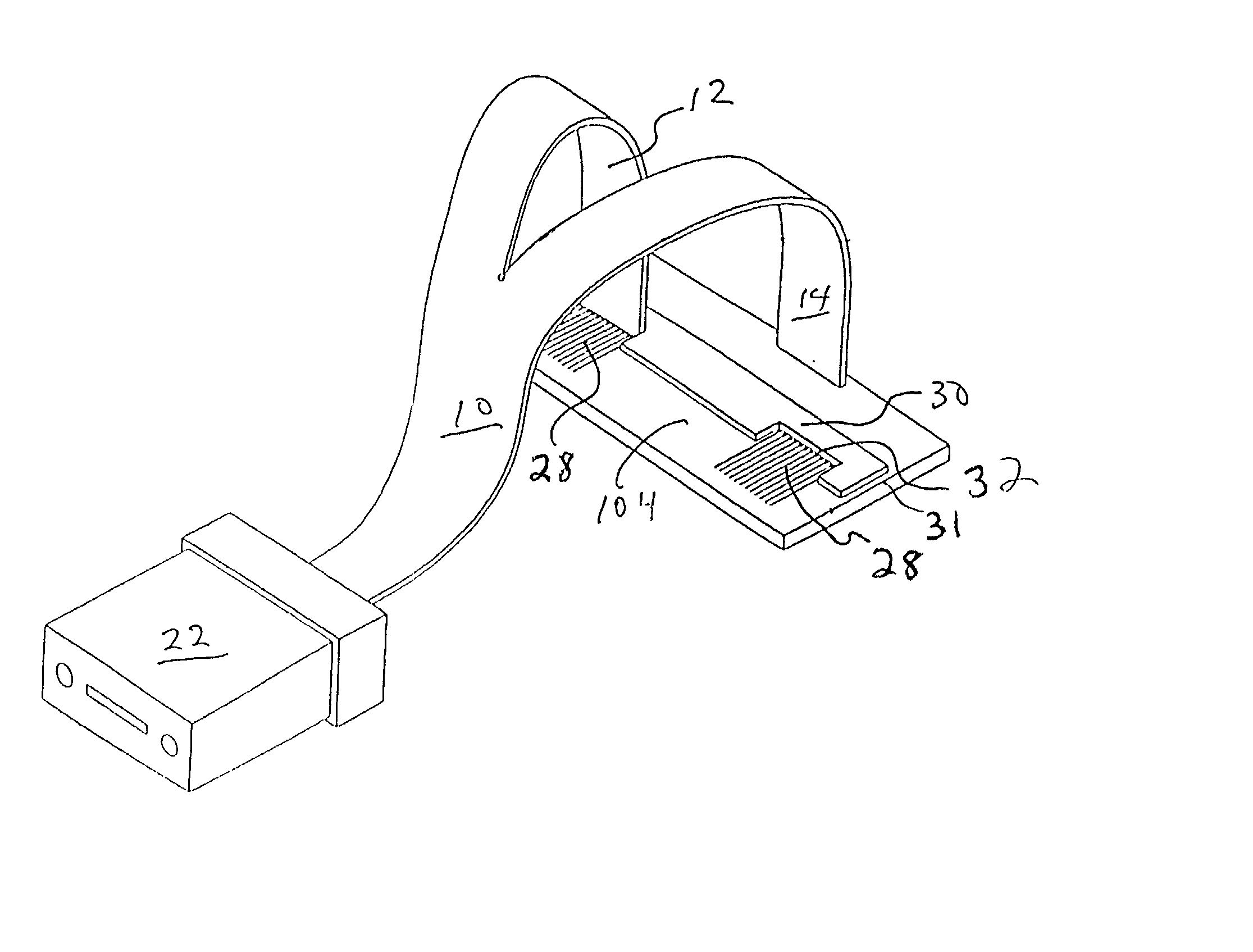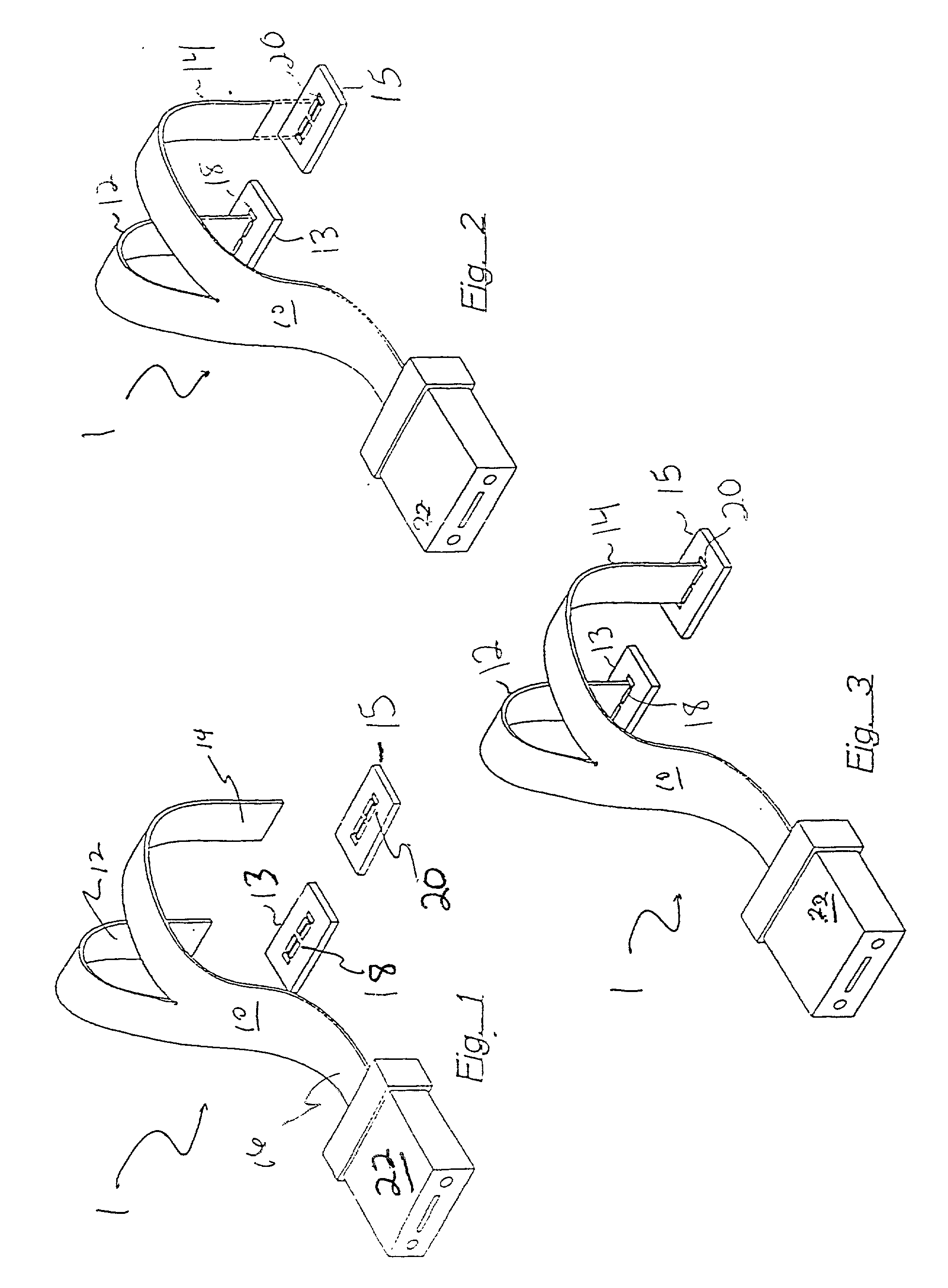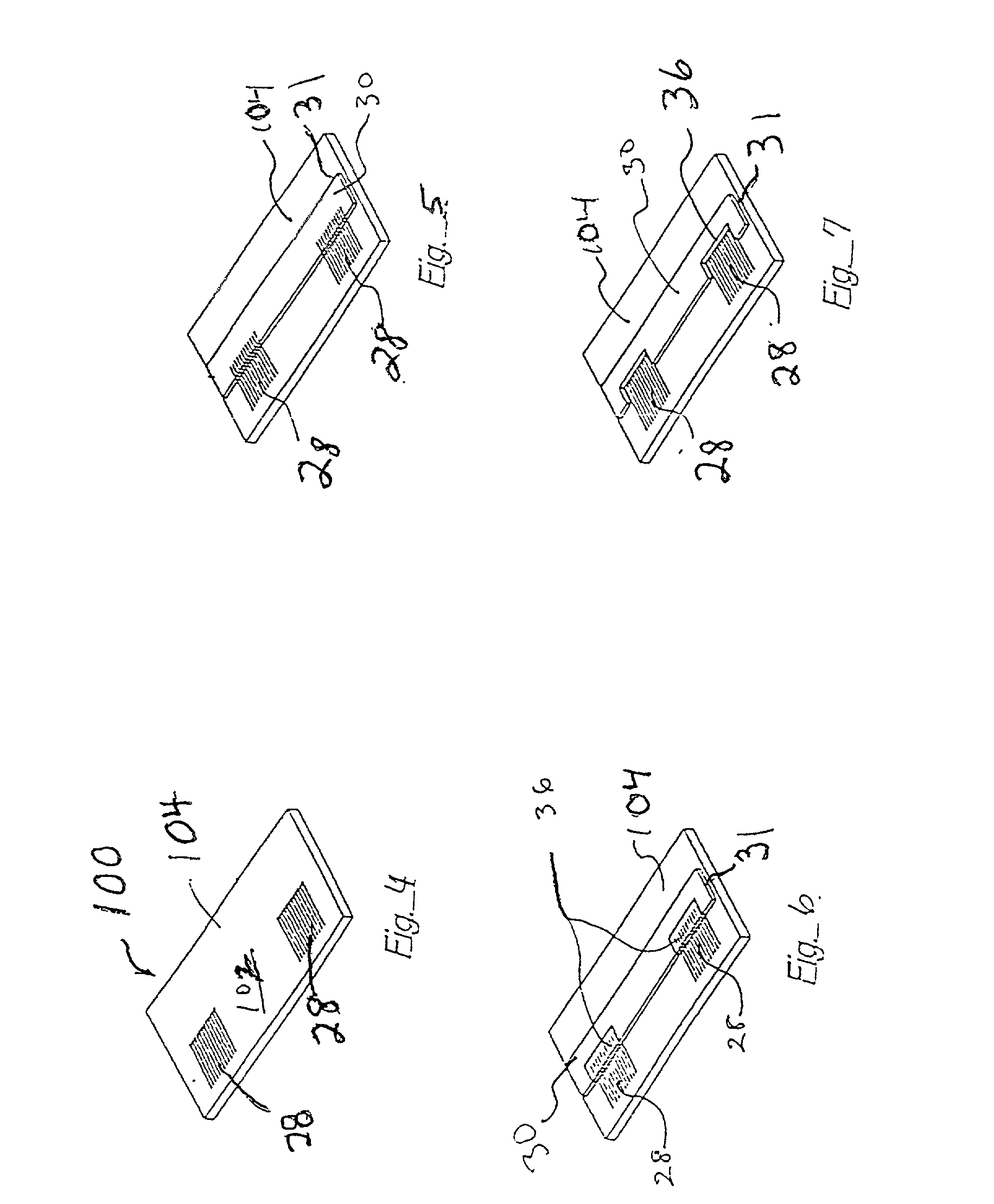Brent waveguide for connection to at least one device, adaptive passive alignment features facilitating the connection and associated methods
a waveguide and passive alignment technology, applied in the field of bent waveguides, can solve the problems of ineffective transceivers, misalignment of optical paths, and affecting so as to reduce the possibility of physical damage, increase design flexibility, and ensure the reliability of optical connections
- Summary
- Abstract
- Description
- Claims
- Application Information
AI Technical Summary
Benefits of technology
Problems solved by technology
Method used
Image
Examples
Embodiment Construction
[0038] The exemplary embodiments of the invention claimed and the appended claims may be more fully appreciated by reference to the following description of preferred embodiments. Within the drawing figures, it should be understood that like elements are identified by like reference numbers.
[0039] As an example of a configuration in accordance with the present invention, a flexible optical waveguide having at least three arms to connect both transmitter and receiver signals, e.g., to a single connector, such as a ferrule, will be described below. Arms other than that to the connector must be independently aligned and connected to both arrays.
[0040] The two arms to the transceiver are bent out of the plane of the connector and / or of the devices. This bend gives these individual arms the flexibility needed to independently align the two arms, one to the transmitter (Tx) array and one to the receiver (Rx) array. This bend also eliminates the need for a mirror to supply light from the T...
PUM
 Login to View More
Login to View More Abstract
Description
Claims
Application Information
 Login to View More
Login to View More - R&D
- Intellectual Property
- Life Sciences
- Materials
- Tech Scout
- Unparalleled Data Quality
- Higher Quality Content
- 60% Fewer Hallucinations
Browse by: Latest US Patents, China's latest patents, Technical Efficacy Thesaurus, Application Domain, Technology Topic, Popular Technical Reports.
© 2025 PatSnap. All rights reserved.Legal|Privacy policy|Modern Slavery Act Transparency Statement|Sitemap|About US| Contact US: help@patsnap.com



